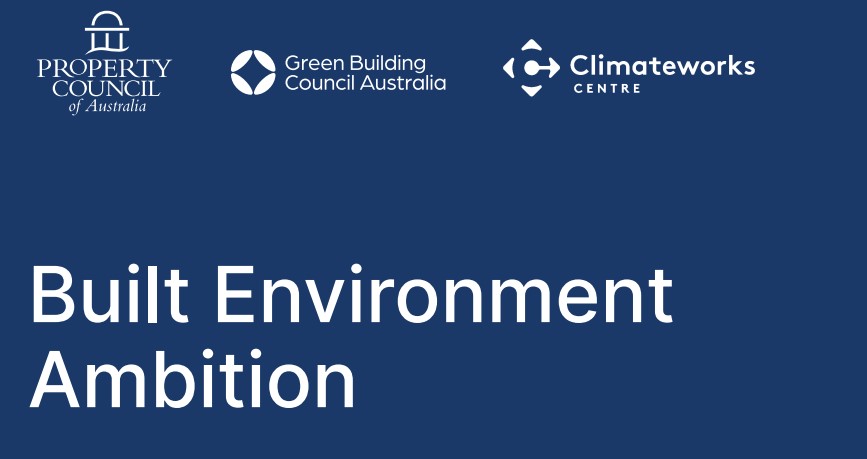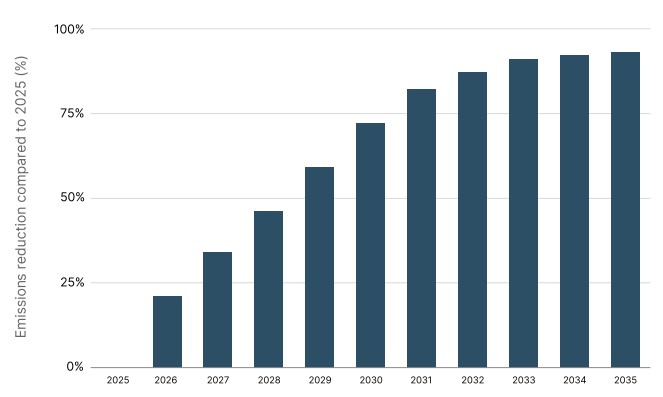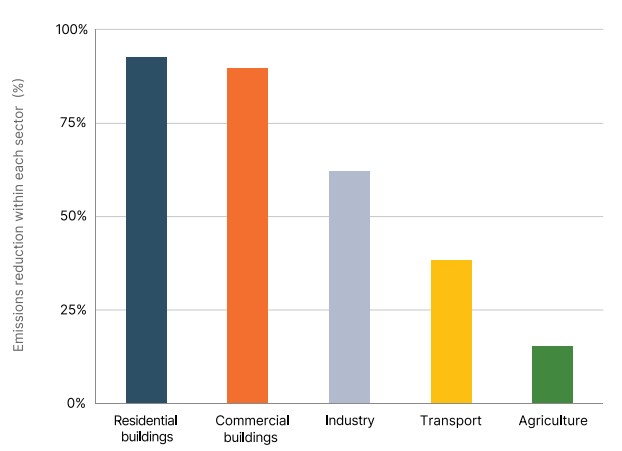Report reveals pathway for built environment decarbonisation
A new report has found that aligning with Australia’s 2035 emissions reduction target could result in a 93% reduction in built environment emissions from 2025 levels.

The recently released Built Environment Ambition is a collaboration between the Green Building Council of Australia (GBCA), the Property Council of Australia, and Climateworks Centre, with support from the Australian Sustainable Built Environment Council (ASBEC).
The report outlines an achievable pathway that would cut emissions in the built environment by 93% over the next decade. This trajectory, according to the report, would be critical in helping Australia reach the more ambitious end of its emissions reduction target of 62–70% by 2035.
Leading the way
According to the report, the built environment is the best placed of any target sector to enact “rapid and deep emissions reductions” over the next decade to help limit global warming to 1.5°C.


The report highlights three key pillars for accelerating decarbonisation in the built environment:
- Electrifying buildings to reduce direct emissions. This means eliminating gas from all new developments and progressively phasing it out of existing buildings. Gas-fuelled heating systems should be replaced with electric systems, gas cooktops swapped for efficient induction alternatives, and gas-fuelled hot water units transitioned to electric hot water technologies
- Improving the energy performance of appliances by installing efficient electric appliances or services such as HVAC and lighting
- Improving the energy efficiency of buildings’ external envelope or the “thermal shell” through upgrades to external walls, roofs and ground floors.
Such a scenario would require the following:
- Coal-powered electricity generation disappears before 2035
- Around the same time period, gas-powered electricity generation is greatly reduced
- Renewable electricity generation grows to 83–90% share of generation by 2030. This increases to nearly 100% by 2050.
Aside from the direct emissions reduction impact, rapidly decarbonising buildings would also provide some leeway for other sectors that have been slower to decarbonise.
For comparison, under a 1.5°C scenario, the transport sector would only reduce emissions by 38% and the agriculture sector only 15% by 2035, in comparison to 90+% reductions in the built environment.


A win–win approach
One of the report’s major arguments is the “no regrets” nature of reducing emissions in the built environment.
It points out that, aside from the global imperative to prevent the worst impacts of climate change, decarbonisation will reduce household energy bills and commercial building operating costs, boost productivity, and improve health outcomes for Australians.
One example of this is a series of heatwaves in 2013–14 that, according to the Climate Council, cost the Australian economy $8 billion in lost productivity. Other benefits of electrification and improved energy efficiency include improved indoor air quality, reduced likelihood of heat or cold stress at home, and lessened inequality and energy poverty.
Aligning objectives
The report aligns itself with the actions identified in the government’s Built Environment Sector Plan (BESP), which was released upon the announcement of the 2035 emissions target.
It makes the following recommendations to help the sector achieve the goals outlined in the BESP:
- Prioritise investment to fast-track energy efficiency and electrification upgrades in Australia’s homes and buildings
- Collaborate with industry to develop a comprehensive BESP implementation plan
- Make new buildings zero-carbon-ready and ready for a warming climate in the National Construction Code (NCC) starting with NCC 2025
- Sustain and expand investment in proven programs.
Read the full report
You can access the full report via the GBCA website.
PREV
NEXT
Comments
Advertisements
Recent news
- ARC unveils streamlined reporting tool
- Aiming high for cooling tower efficiency
- RAC teaching team recognised at RMIT Awards
Latest events
- Melbourne School of Design to host ASA2025 conference
- HVAC&R industry’s finest shine at 2025 AIRAH National Awards
- Nominations open for ARBS Awards 2026
 Nick Johns-Wickberg
Nick Johns-Wickberg

Leave a Reply